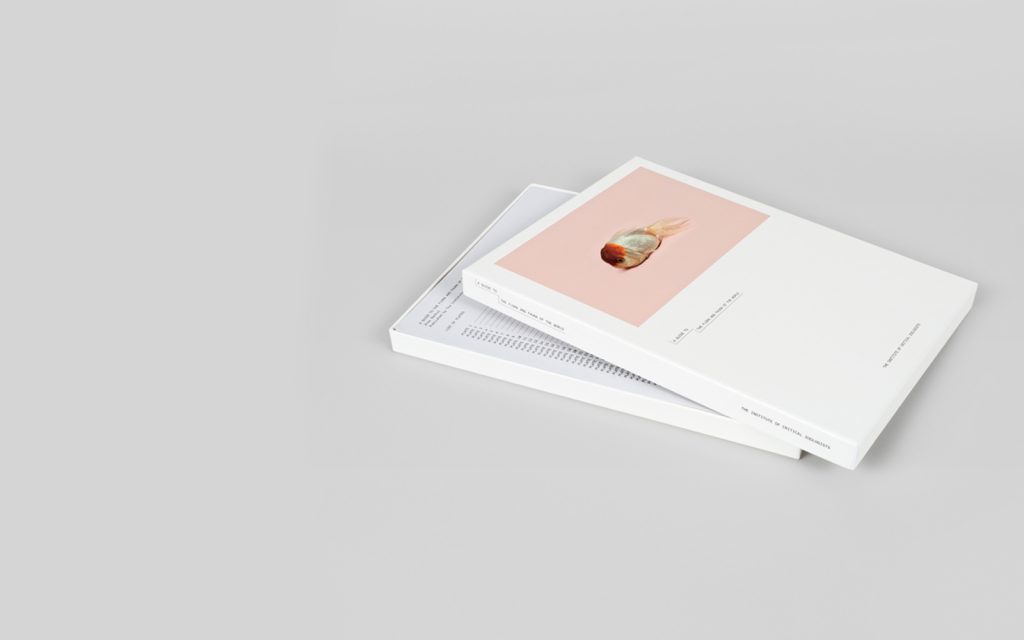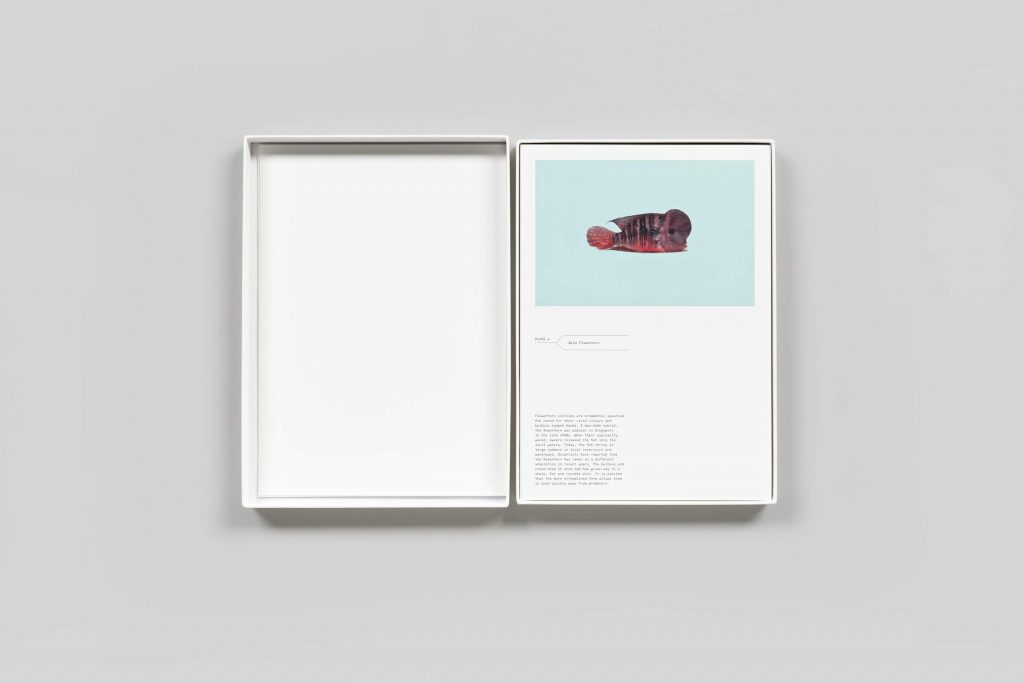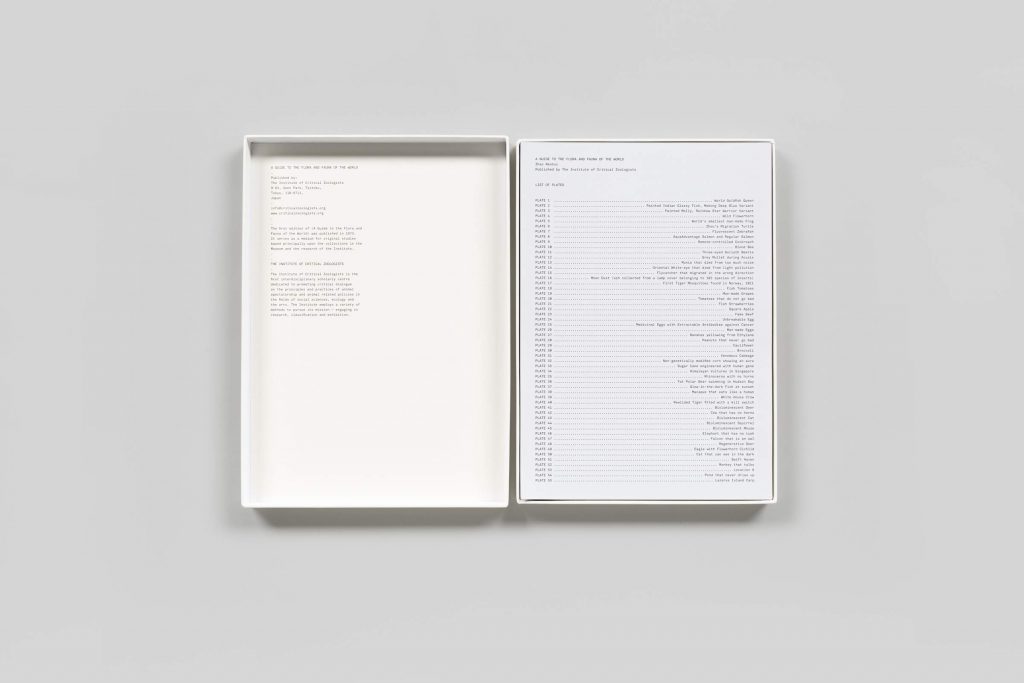Robert Zhao Renhui’s “A Guide to the Flora and Fauna of the World”
Surprising and oftentimes heartbreaking, a catalog of species permanently altered by human existence

Singaporean photographer Robert Zhao Renhui‘s A Guide to the Flora and Fauna of the World (published by The Institute of Critical Zoologists) documents the species of plants and animals that have been most impacted by human existence. Renhui studies our own species through our relationships with others. Sometimes we’re the protagonist and a noble hero, but most often we’re reprehensible; permanently rearranging the world around us.

The book—unbound and housed in a sleek, hardcover box—is made up of 56 pages, each one dedicated to a particular animal or plant. For the project, Renhui’s primary mission was to explore our faith in science and our perception of photography as fact.

Page seven profiles the “Fluorescent Zebrafish,” a tiny fish that’s been “encoded with a green fluorescent protein from a jellyfish.” Credited to a Singaporean team of scientists in 1999, the experiment worked to detect the presence of water pollutants—when the fish was exposed to said pollution it would glow bright green. One can argue for both sides of the experiment: knowing immediately when water is polluted can be beneficial in saving other species from exposure, but nowadays the Fluorescent Zebrafish is one of the best-selling novelty pets in the United States.
Then there’s the Munia, a small Singaporean bird, that “died from too much noise.” Citing the loud noises of increased construction and the elevation of highways, many birds die of shock (from the loud noises), exhaustion (from trying to sing overtop the manmade noise) and disorientation (from light pollution and collisions).

Several pages are dedicated to plants that have been altered by human preference. From bananas being yellowed using ethylene (the yellowing is a side effect of the artificial ripening process most commercially available bananas go through) to apples grown in the shape of a square to be sold as novelties in South Korea, there are numerous examples of ways humans are messing with our own food.
On page 36, the world’s heaviest polar bear plunges into the Hudson Bay. Naively, a heavier bear may imply resiliency against the popular claims of their inevitable extinction, but the heavier bear is part of a larger trend. As winters (peak hunting season for the polar bear) get shorter, bears have to hunt and consume more to last through the longer summers.

With all of the talk about the looming demise of our planet, it’s critical to know how we got here, and Renhui shines a light on the ways in which our evolution and editing have irreversible effects on everything around us.
A Guide to the Flora and Fauna of the World was a winner of the 2017 Steidl Book Award Asia and, a result, Renhui joined the Steidl team in Germany to print his book—which is available now.
Images courtesy of Steidl












